What we’re watching
‘House of the Dragon’ – a grand yet cautious imitation of ‘Game of Thrones’
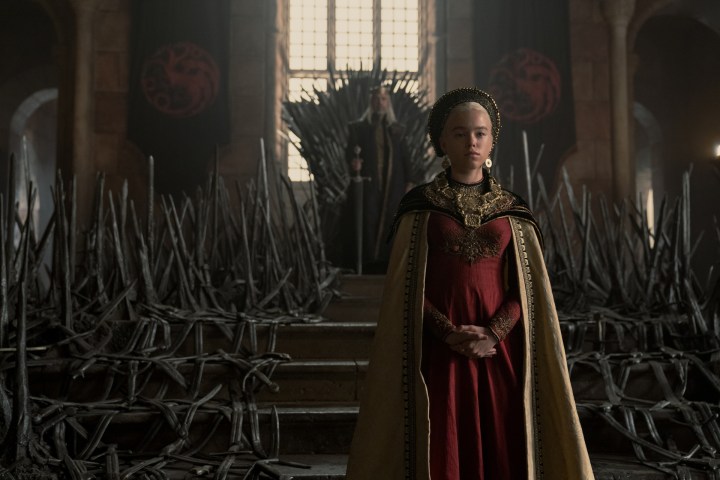
The long-awaited prequel series recreates much of the magic of the early seasons but seems a little too eager to imitate its predecessor.
Someone thought it a good idea to kick off Game of Thrones’ (GOT) long-awaited prequel epic with bedtime fairy-tale narration. This lazy spoon-feeding immediately indicates how HBO is handling their audience in the wake of the infamously messy season finale of GOT – like a child throwing a tantrum demanding pancakes for dinner. The good news is we got our pancakes; the bad news is we may be living off the same syrup-sweet meal for a while.
This first spinoff series has the potential to either reignite GOT’s previously stratospheric popularity, or be a nail in its coffin. HBO previously planned to release a prequel focused on The Long Night which was tentatively named Bloodmoon. After the fallout of season 8, there was a case to be made for doing something completely different within George R.R. Martin’s universe – the story of The Long Night takes place thousands of years before the iron throne even existed – but Martin has written very little of that time period, and since many believe it was the lack of source material that caused the late seasons of GOT to flop, the project was deemed too risky.
House of the Dragon (HOTD) represents the opposite direction. “If it ain’t broke, don’t fix it,” says co-showrunner, executive producer and director Miguel Sapochnik. Based on the Targaryen civil war known as the Dance of the Dragons, it’s an ideal vehicle for delivering double doses of the essential GOT ingredients: family drama, violent conflict, sexy taboos and lots of dragons.
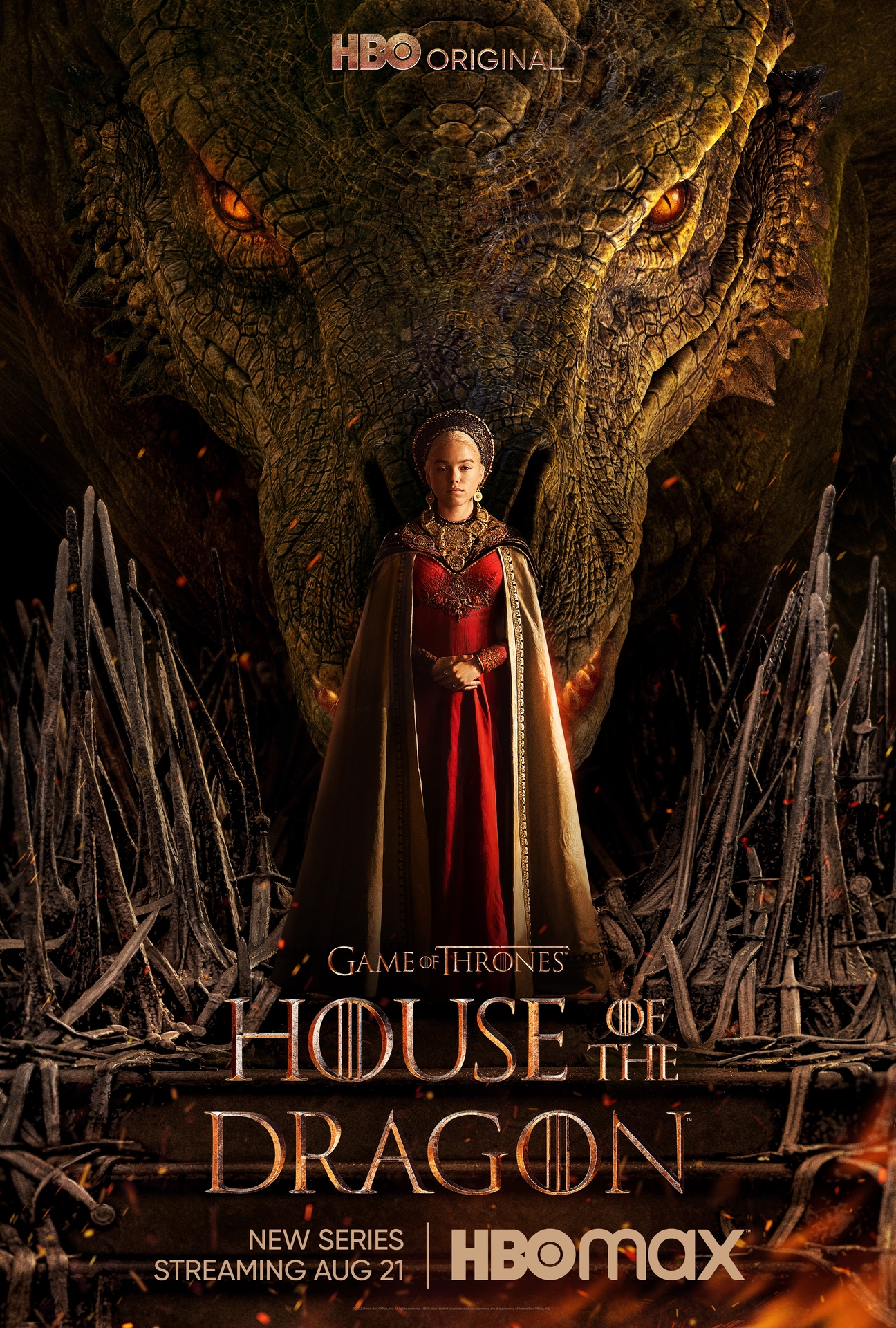
House of the Dragon poster. Image: courtesy of Warner Brothers
Our narrator opens the tale by taking us back to the 101st year of the Targaryen dynasty. With 10 adult fire-breathers, the House of the Dragon stood at the height of its power, and the only thing capable of destroying it was itself, so King Jaehaerys called a meeting of The Great Council to prevent civil war by settling the matter of his succession. It’s a familiar dispute for GOT fans – eldest descendant (in this case Princess Rhaenys) versus eldest male descendant (Viserys the first). Unsurprisingly the latter prevails.
This prologue could easily have been replaced with a few sentences of casual exposition, as was more customary in GOT. The reason it’s spelled out so bluntly is to drive home the central theme of the series, as put by “the queen who never was, Princess Rhaenys: “Men would rather put the realm to the torch than see a woman ascend the Iron Throne.”
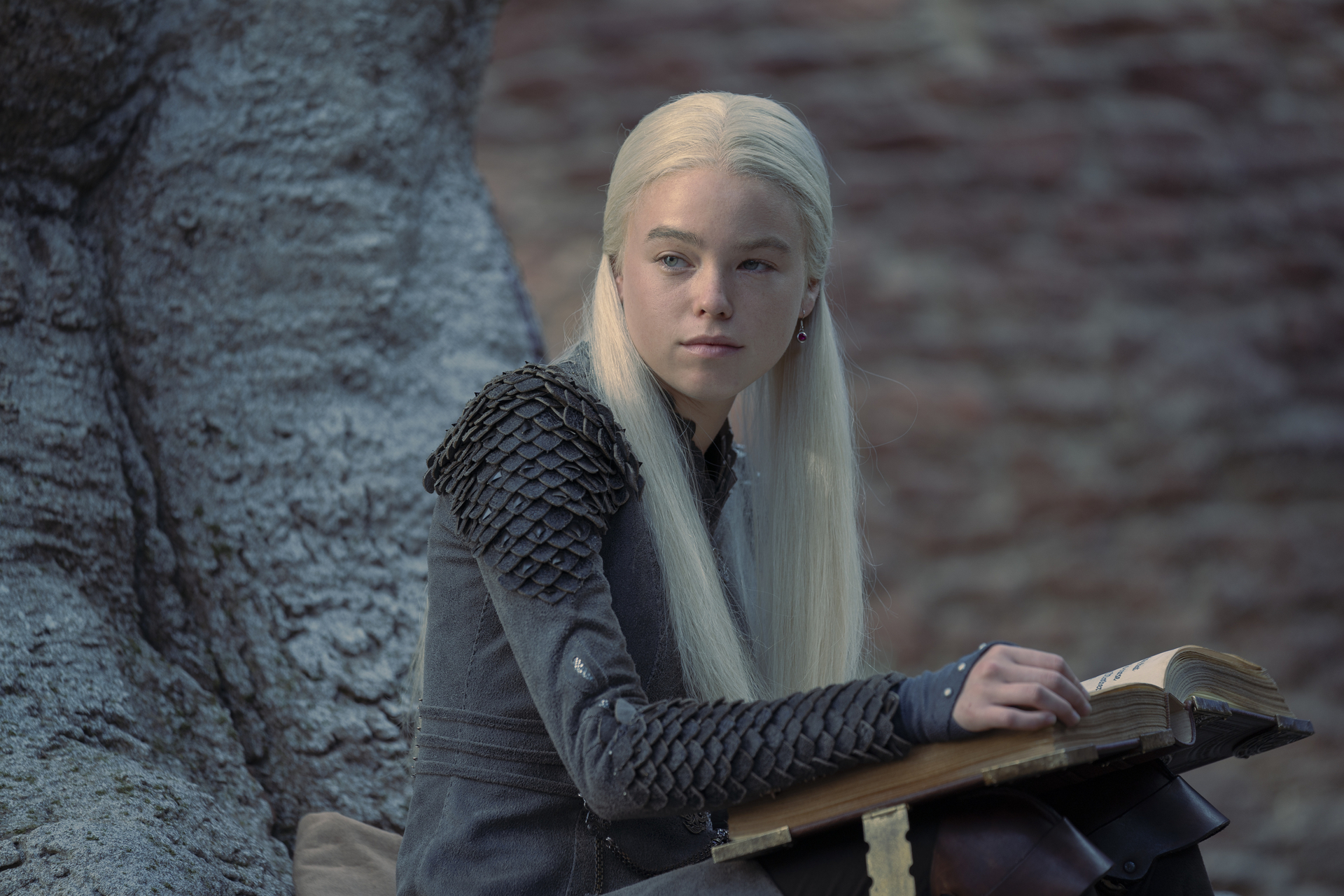
Milly Alcock in House of the Dragon. Image: courtesy of Warner Brothers
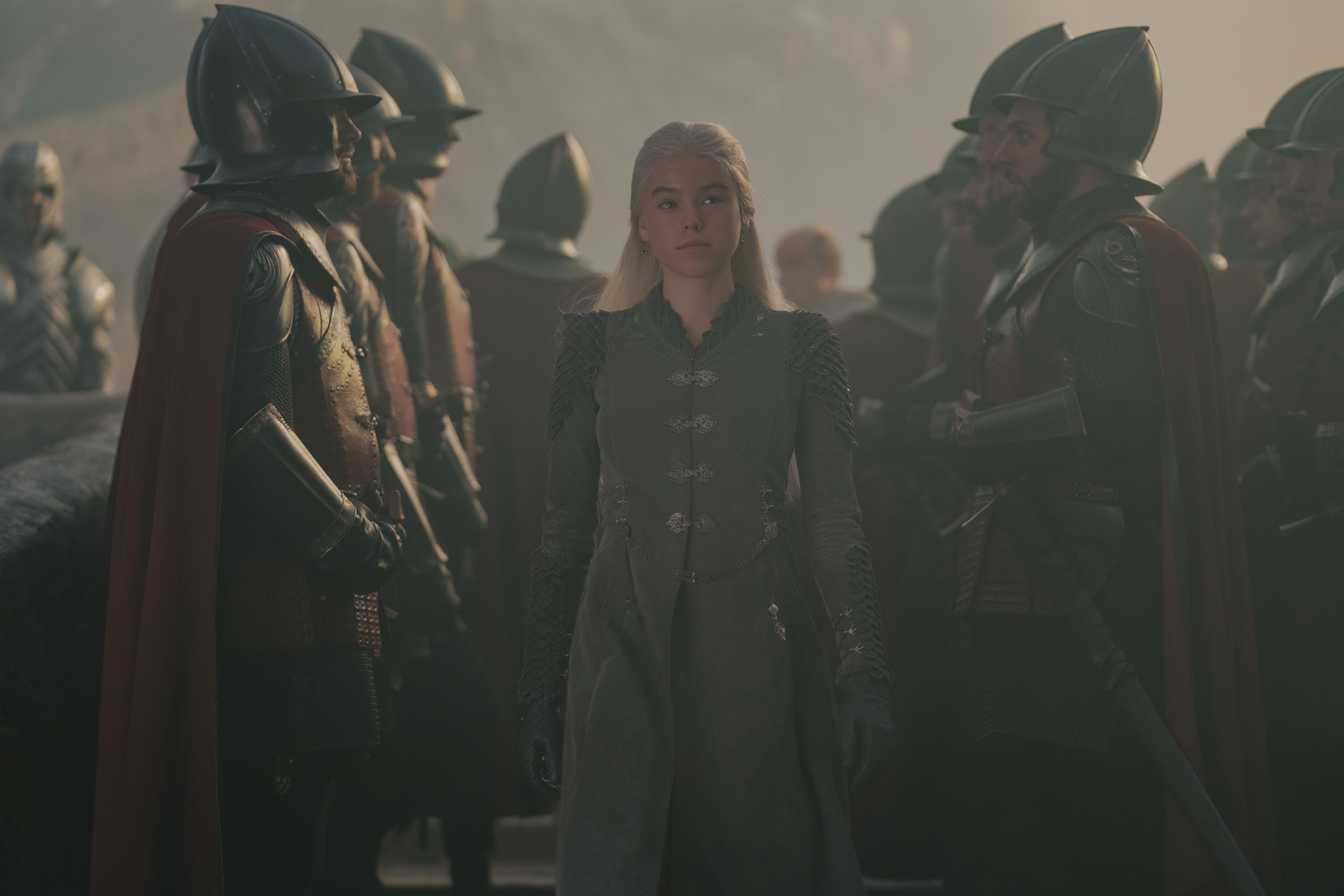
Milly Alcock in House of the Dragon. Image: courtesy of Warner Brothers
Nine years after the meeting of The Great Council, 172 years before the birth of Daenerys Targaryen, we meet her spiritual predecessor, Princess Rhaenyra, (Milly Alcock) a precocious 15-year-old dragon-rider who finds herself at the centre of a similar dilemma. Indeed the entire first episode serves to demonstrate the deeply patriarchal context in which Rhaenyra is suddenly thrust into power.
The sexual abuse of women was a defining feature of GOT, which did not always succeed in walking the line between commenting on the immorality of violence against women and profiting from viewers’ taste for it. HOTD still harnesses the shock factor of horrific misogyny (standout moments include a scene of the ageing King Viserys courting a 12-year-old girl and a childbirth scene in the first episode which is as disturbing, if not more so, as anything depicted in GOT) but there is a clear difference in the way that these scenes are depicted visually.

Sian Brooke in House of the Dragon. Image: courtesy of Warner Brothers
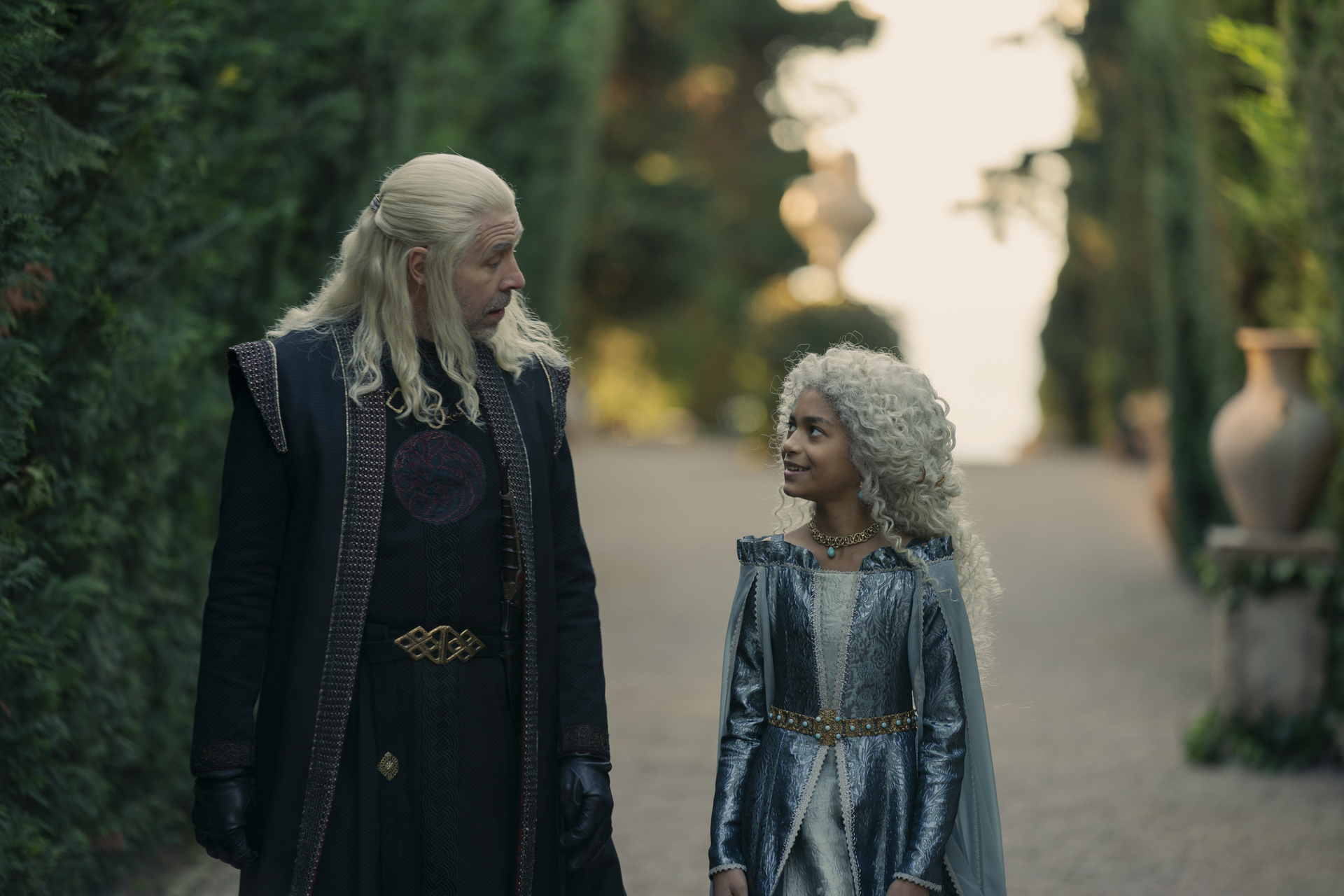
Paddy Considine and Nova Foueillis-Mosé in House of the Dragon. Image: courtesy of Warner Brothers
GOT’s approach to graphic content was to be as explicit as could be gotten away with. HOTD proudly parades the same extent of violence and objection to women but curates it meticulously, using a lot of implications in order to evade the additional explosives that have popped up since the early seasons of GOT.
There is an obvious reluctance to offend viewers, and while that is not a bad thing, it makes scenes feel cautious and stagey. The only character in the early episodes who approaches the wickedness we’ve come to expect from GOT is King Viserys’s younger brother, Daemon, played by a leering Matt Smith.
HOTD is based on Martin’s Fire & Blood, written as a history book from three different primary sources. This made it easier to emulate the early GOT seasons’ shifting point of view, which takes us inside the minds of a host of different characters, each imperfect, each relatable in some way. This is particularly well done with the wayward Prince Daemon, whose volatile motivations we can empathise with despite his want of violence and creepy relationship with his niece.
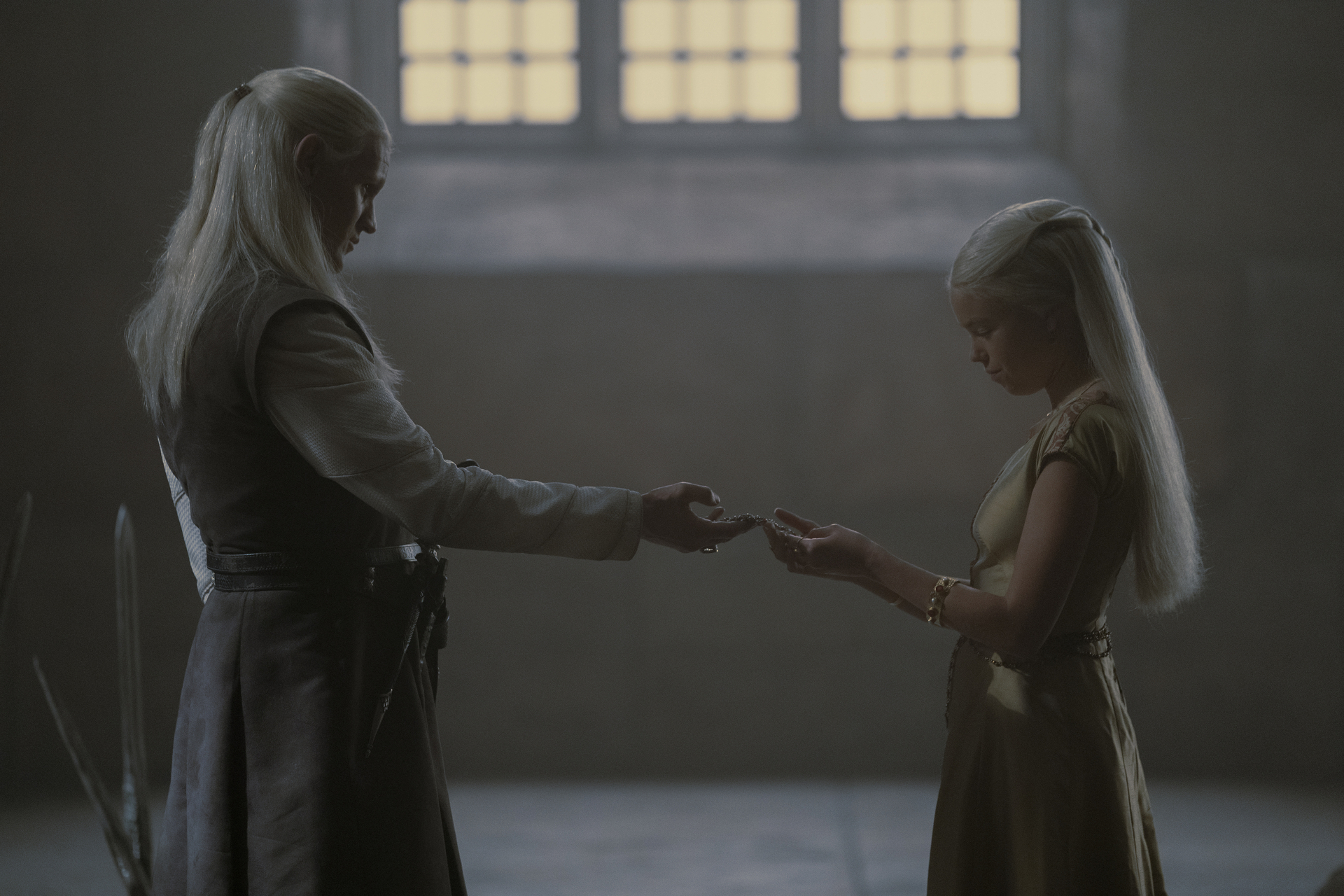
Matt Smith and Milly Alcock in House of the Dragon. Image: courtesy of Warner Brothers
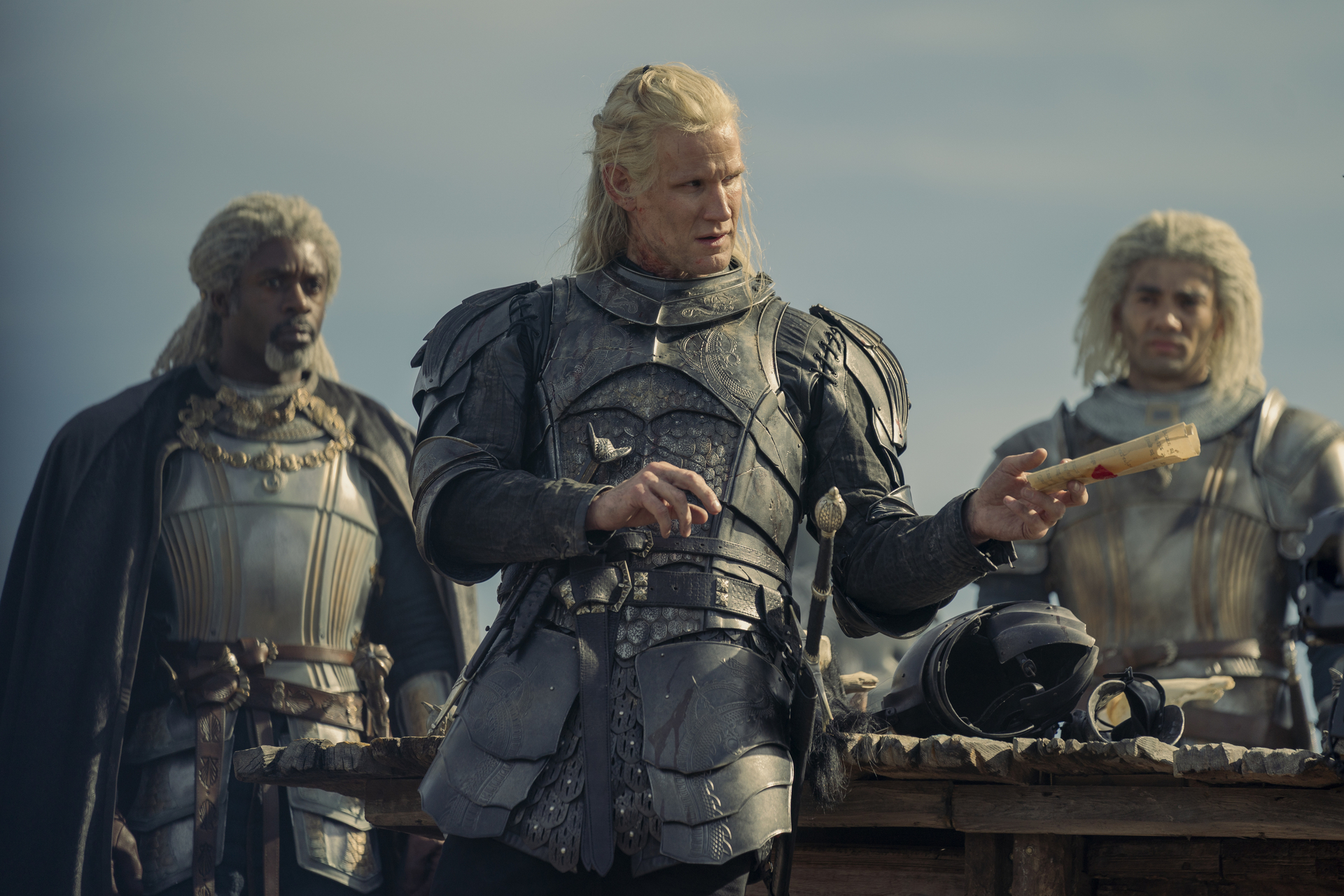
Wil Johnson, Matt Smith and Theo Nate in House of the Dragon. Image: courtesy of Warner Brothers
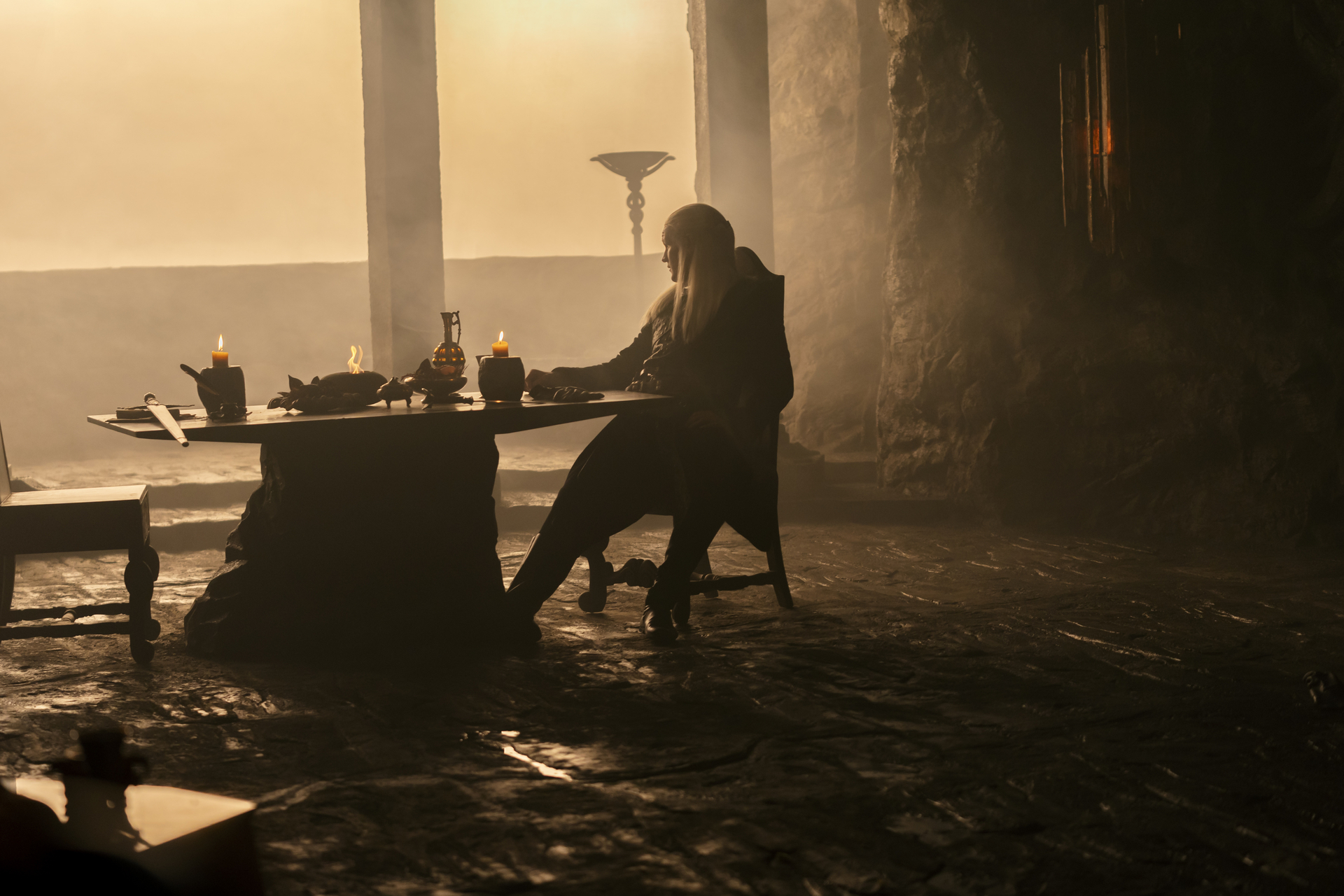
Matt Smith as Daemon in House of the Dragon. Image: courtesy of Warner Brothers
Other notable performances are Paddy Considine as King Viserys Targaryen who captures both his merits and flaws earnestly, highlighting the absurdity of such totalitarian power in the hands of someone so blitheringly human; and Eve Best, who is as brilliant and underutilised as her spurned character, Rhaenys Targaryen, but still manages to show off intelligence and ferocity.

Paddy Considine and Rhys Ifans in House of the Dragon. Image: courtesy of Warner Brothers
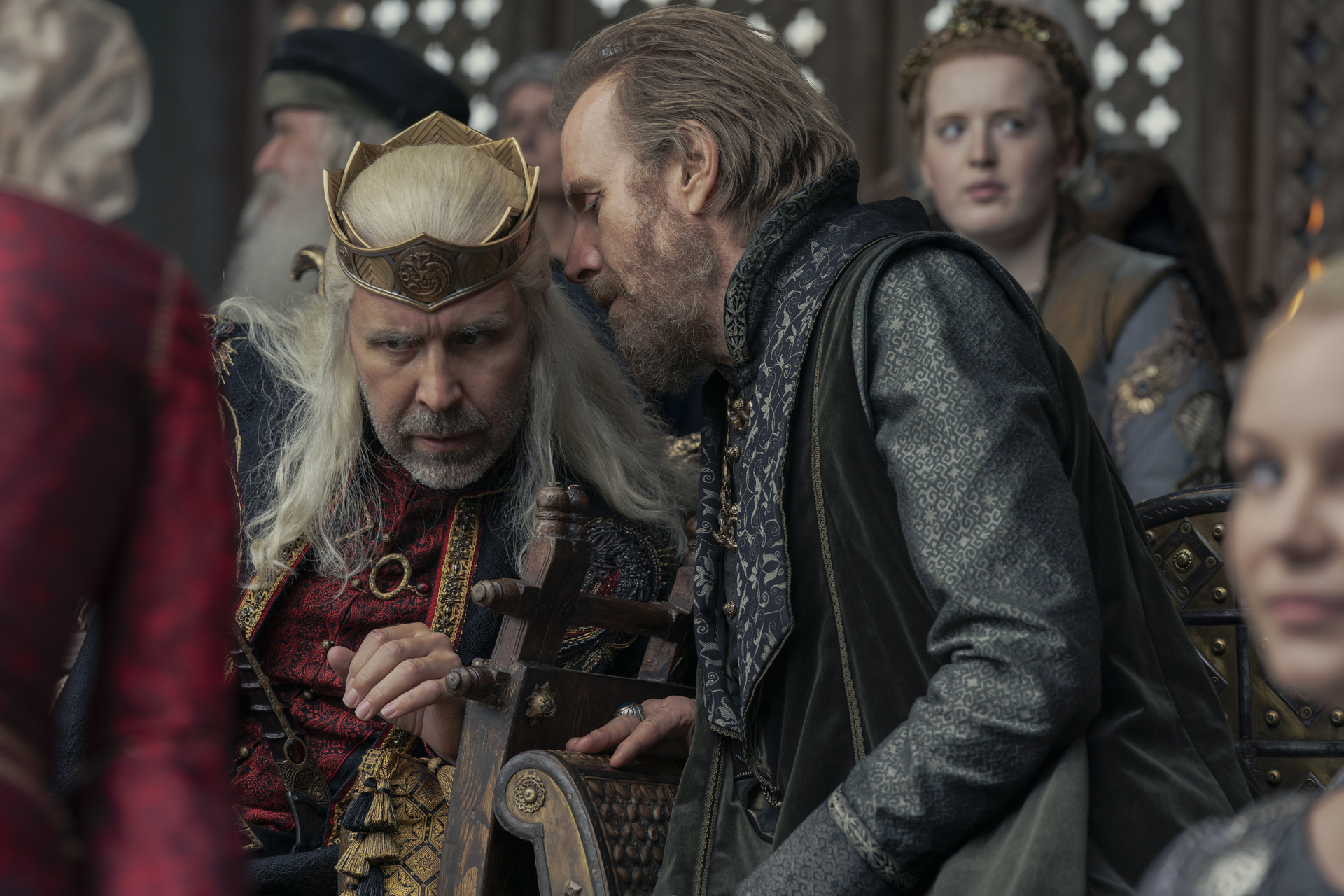
Paddy Considine and Rhys Ifans in House of the Dragon. Image: courtesy of Warner Brothers
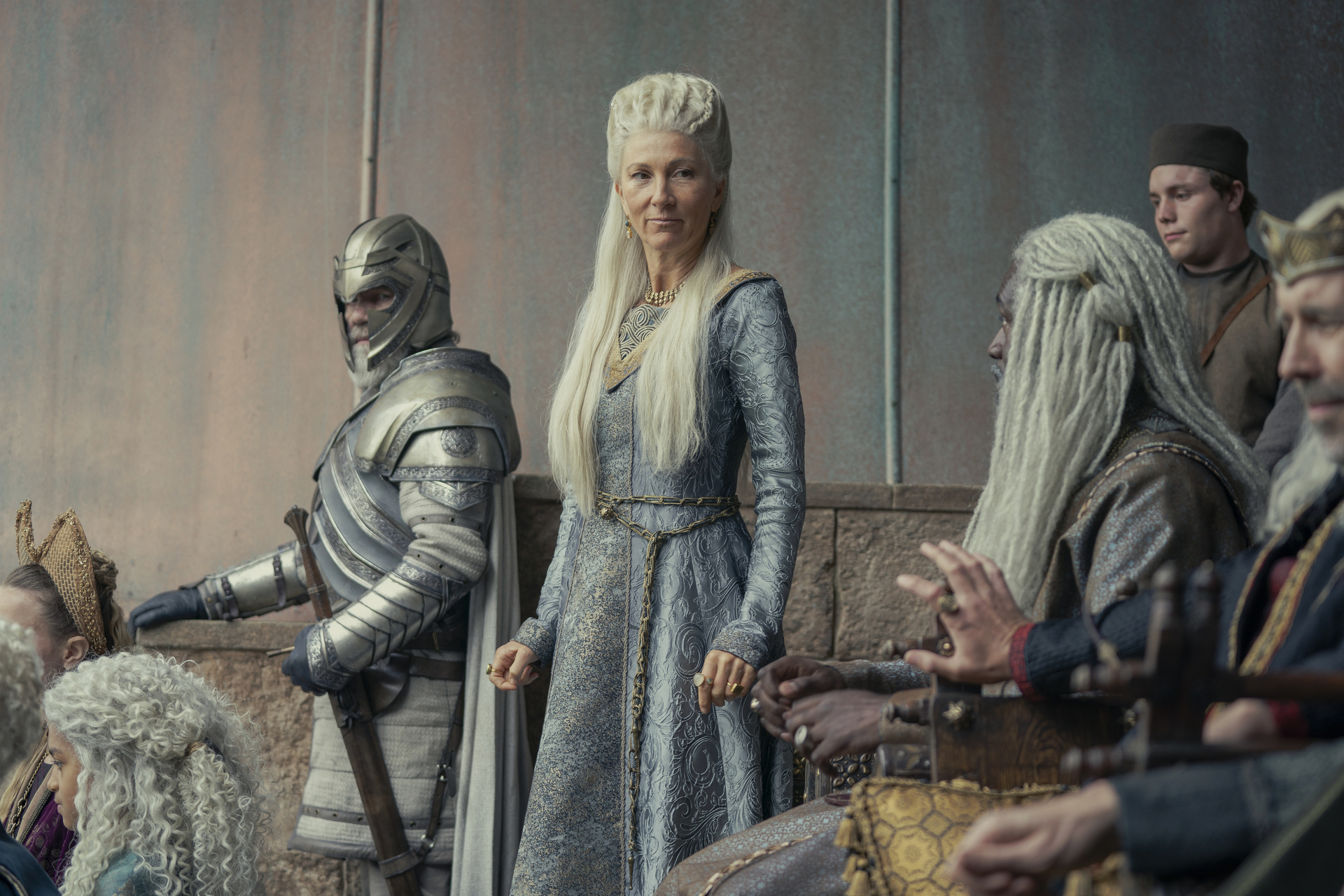
Eve Best as Rhaenys Targaryen in House of the Dragon. Image: courtesy of Warner Brothers
Another way in which HOTD resembles the early seasons of GOT is the subtle development and adaptation of lore, and this is most evident in the treatment of the dragons, which behave like large animals rather than fantasy creatures and are the centre of the cultural infrastructure of the time. The CGI assets of the dragons have been developed extensively, and are used more generously than in GOT.
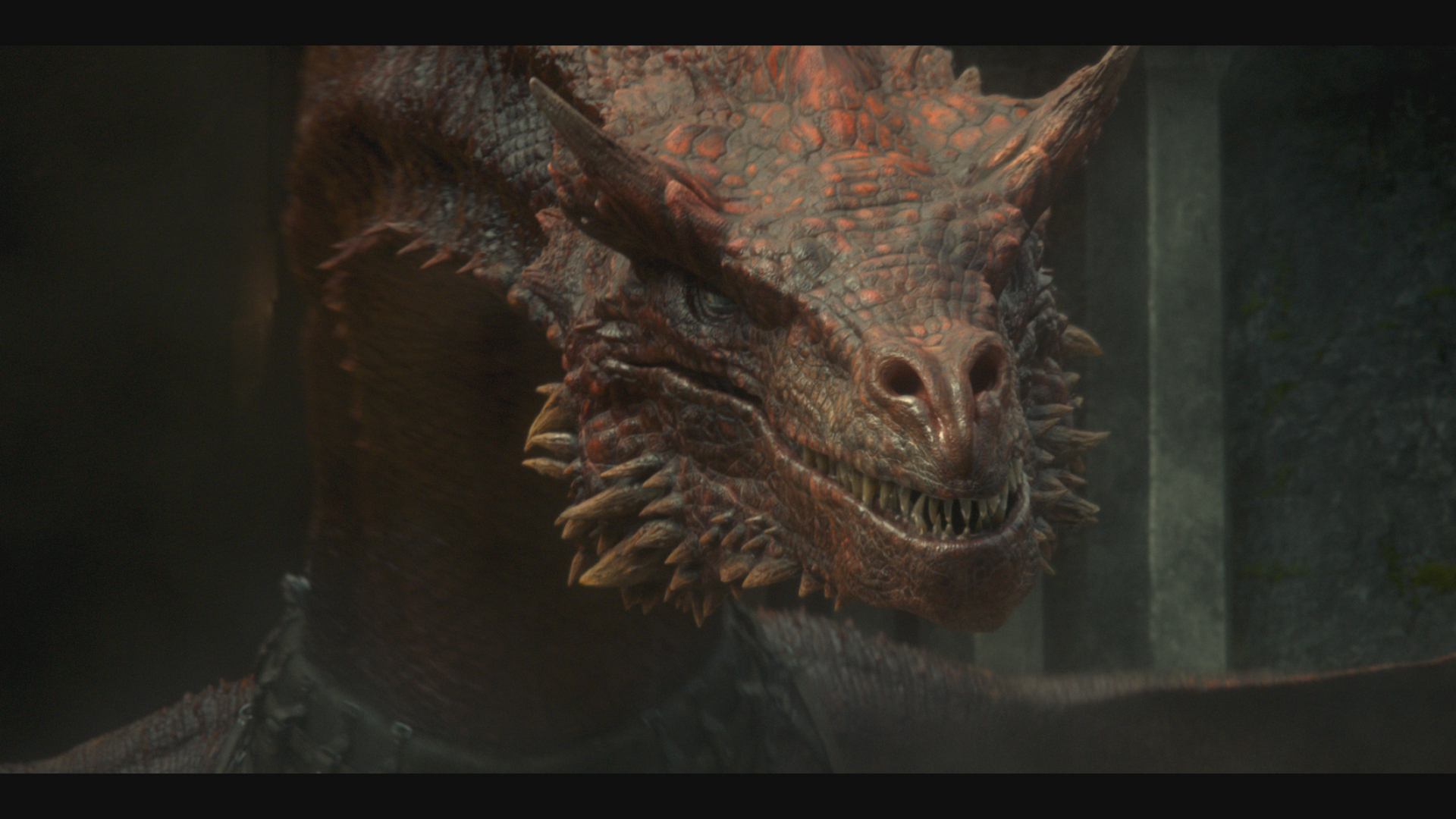
House of the Dragon. Image: courtesy of Warner Brothers
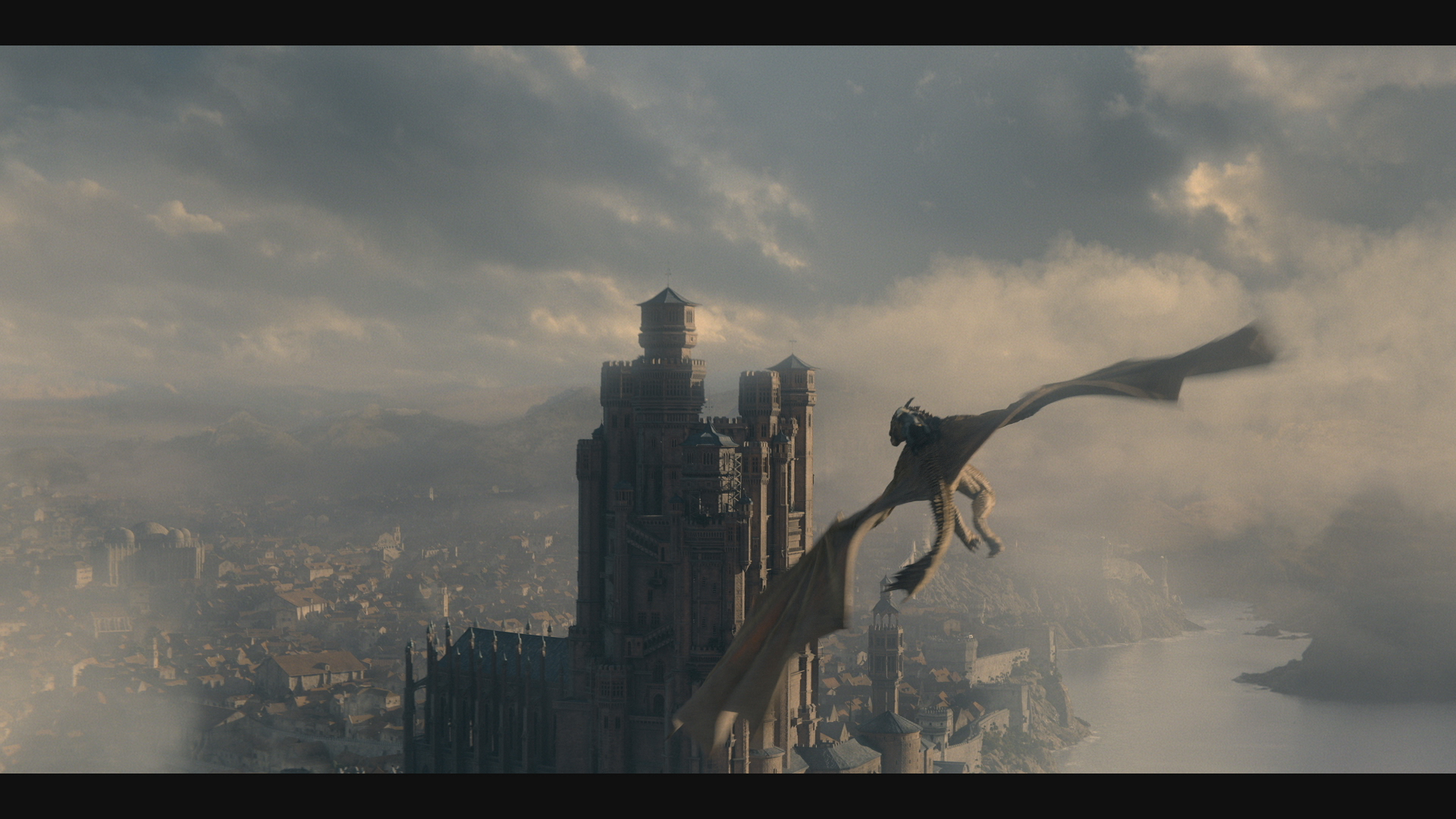
House of the Dragon. Image: courtesy of Warner Brothers
Only time will tell whether the novelty of the dragons’ commonplace will wear out. Ramin Djawadi’s epic opening theme music has already lost its sheen, sliced and diced and then hastily patched back together. Without the map motif of its original incarnation, the series opens like a downscaled model of the original rather than an extension of it.
House of the Dragon has accomplished its primary goal of re-establishing George R.R. Martin’s universe at the forefront of television. Fans of GOT are rewarded with Easter eggs and the occasional reference to a Stark, Baratheon, and other familiar family names. It’s done fairly well, recreating the magic that so captivated audiences, but it has the distinct feel of recreation – a mimicry that treats the entirety of Game of Thrones as market research from which the most popular and provocative properties are distilled.
Evidently, The Dance of Dragons is a routine of rote regurgitated steps – a crowd-pleaser to be sure, and a recovery from the missteps of the final seasons of Game of Thrones, but still a cover act. If Westeros is to continue to entertain us, sooner or later we’ll need to see some new moves. DM/ML
Episodes of House of the Dragon are released weekly in South Africa on M-net from August 23.
You can contact This Weekend We’re Watching via [email protected]

















 Become an Insider
Become an Insider
Comments - Please login in order to comment.